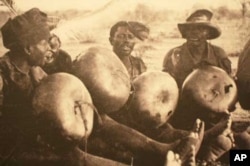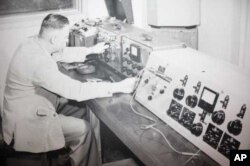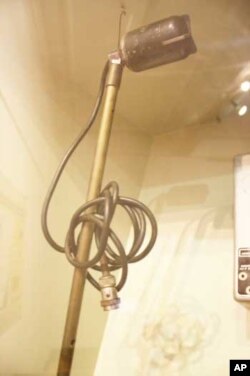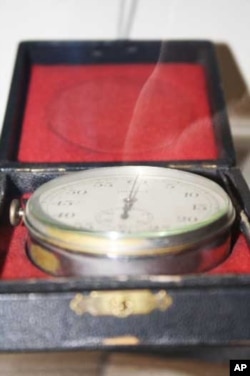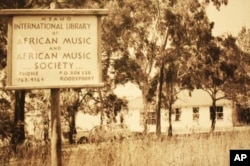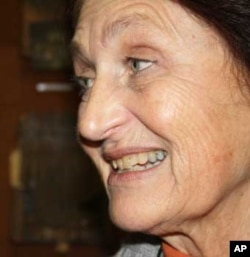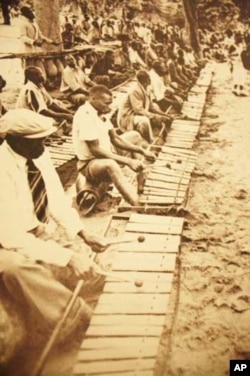This is Part 2 of a 5-part series: Honoring Africa’s Traditional Music
Continue to parts: 1 / 2 / 3 / 4 / 5
Three big trucks – packed with metal lathes, reel-to-reel recorders, heaps of pancake-shaped tapes, hundreds of yards of electric cables and assorted microphones, military tents, tarpaulins and tinned food, a half-ton diesel generator, hundreds of gallons of fuel and five people.
Those were just some of Hugh Tracey’s requirements when he undertook what modern day musicologists consider to be one of the greatest musical journeys ever.
“My father started recording in the late 1920s and 1930s using a lathe on acetate discs in the field, but most of his recordings were done in the 1940s on a quarter-inch, open reel tape. The machines in those days, until the 1960s, used to need (a power supply of) 220 volts, hence the need for that massive generator,” Andrew Tracey explained.
From the 1920s until his death in 1977, Hugh Tracey, an Englishman based in South Africa, lugged his equipment throughout sub-Saharan Africa with one mission – to record as much of the indigenous African music he loved as possible
“He had a vision,” said Andrew. “And that was to preserve this music for future generations.”
Meticulous notes
Today, a single person with a palm-sized, battery-driven digital machine with a built-in high quality microphone is able to make broadcast-quality music recordings. In Hugh Tracey’s time, it was very different. “His recording technique was to hold a microphone in one hand, and a stopwatch in the other, to time recordings. The microphone was on a short boom, and he’d move around following the sounds of the musicians,” said Andrew. “It was a physically taxing effort.”
Hugh Tracey’s microphone was linked with a long cable to a large lathe, and later to a reel-to-reel tape recorder, operated by an engineer who would control the sound levels and ensure that the tape ran smoothly.
“Recording had to happen as far away as possible from the noise made by the generator, so my father needed really long cables,” said Andrew.
After his field trips, Hugh Tracey made meticulous notes about each piece of music he’d recorded – on the people making the music, the instruments they used, the recording venue and so on.
He stored his notes and masses of tapes at the International Library of African Music (ILAM) in South Africa, which he established in 1954. Library staff recently digitized Hugh Tracey’s recordings, using the latest technology to improve the original sound as much as possible, and stored it on computer.
“It’s a treasure trove of the sounds of Africa’s past,” said Prof. Diane Thram, an American musicologist and ILAM’s current director.
Mbira ‘heartland’
In the early 1930s, Hugh Tracey received his first grant – to study and record the indigenous music of then Rhodesia, now Zimbabwe – from the Carnegie Foundation in the United States.
“He did a very thorough canvassing of the whole of what is now Zimbabwe and prepared a report. It contains photos of musicians playing every instrument he discovered in the field and analysis of the scales that are played on every instrument,” said Thram.
Hugh Tracey became enamored with the mbira – a complex 24-note thumb piano made of wood and steel used by Zimbabwe’s Shona people.
“The thumb piano is found only in Africa, and Zimbabwe is its heartland. It’s a very expressive instrument – not very outgoing and loud like so much African music. It’s very intimate, personal music,” said Andrew.
His father was especially fond of the Shona’s use of the mbira to “create atmosphere” while telling stories to their children.
The ‘great’ Jege Tapera
When Andrew was a child in the early 1940s, he remembers his father “constantly” telling him about the mbira and his admiration for those who could play it. “That was one of the things that he was hinting throughout his life – that I should learn the mbira.”
In 1960, after studying music in England, Andrew joined the Kwanongoma College of African Music (now the United College of Music) in Bulawayo in Zimbabwe. He immediately began “scouring” the city and its surrounds for someone to teach him the intricacies of mbira playing.
“Jege Tapera was the man I found…. He taught me; he took me over as his son, in a way. It was hard playing (my) first African instrument. But the great Jege Tapera guided me,” Andrew recalled. “Jege went on to get a job teaching the mbira at the college. He died later, after many years, having taught many Zimbabweans how to play his kind of mbira, which is called a karimba.”
Andrew followed in his father’s footsteps to also become one of the world’s leading authorities on traditional African music. Together, they collected thousands of indigenous songs and the sounds of instruments unique to Africa, from Zimbabwe’s mbira to Uganda’s lizard skin Ganda drums, to the Central African Republic’s Kundi tortoise shell harps and many more.
Chopi of Mozambique
Among the “most central” sounds of the Tracey archive, said Thram, was the xylophone, or timbila, music made by Mozambique’s Chopi people and recorded by Hugh Tracey in the early 1940s.
Andrew described Chopi xylophone melodies as “one of the great, grand music’s of Africa,” adding, “Chopi music is so special because we know it’s at least 500 years old, from written evidence.”
Thram said Hugh Tracey faced “immense hardships” on his decades-long quest to discover indigenous African music. “For instance, there were no roads in some of the areas where he went,” such as in east Africa in the 1940s.
“He traveled through very difficult conditions, but we have remarkable recordings (he made) from the Swahili coast of Tanzania and Kenya,” stated Thram.
Andrew said his father “loved the complexity of the singing” he recorded in east Africa.
‘Incomparable’
Using a grant he received from the Ford Foundation in the United States, Hugh Tracey in 1958 began compiling what would eventually stand as one of his crowning achievements.
“One of the most incredible things he did was to create what he called ‘The Sound of Africa’ series. It ended up being a 210 LP series which then became a 218 LP series when Andrew Tracey’s field recordings were added,” said Thram.
ILAM has now digitized this series and produced it in CD format.
“(In this series) you have music from the Belgian Congo, Kenya, Tanzania, Malawi, Mozambique, Zimbabwe, Zambia, South Africa, a little bit from Namibia,” said Thram. “(Hugh Tracey) covered a large geographic region for the time. So that’s one of the things that makes this collection so remarkable.”
She’s convinced that Hugh and Andrew Tracey’s work is “incomparable.”
“Their work, and Hugh Tracey’s work in particular, can never be equaled – even with modern-day technology, because they recorded Africa’s musical history.”
She added, “While it’s a history that cannot be repeated, Hugh and Andrew Tracey have preserved part of it for the world to hear. It’s now up to the world to listen, and hear what amazingly rich cultures exist, or once existed, in Africa.”
